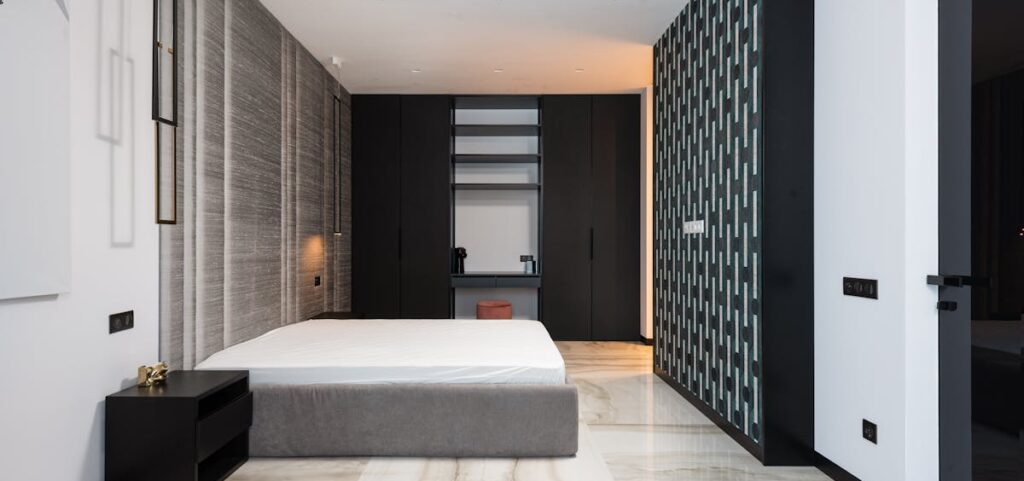As cities grow denser and housing prices continue to climb, micro-apartments are emerging as an innovative solution to urban living challenges. These small yet functional homes are designed to maximize space while minimizing costs, offering a sustainable and practical option for modern urban dwellers.
This article explores the concept of micro-apartments, their benefits, challenges, and why they are quickly becoming a popular choice in urban centers worldwide.
What Are Micro-Apartments?
Micro-apartments, or micro-units, are compact living spaces typically ranging from 150 to 400 square feet. Despite their small size, they are thoughtfully designed to include:
- Sleeping Area: Often convertible, like a Murphy bed or a pull-out couch.
- Kitchenette: Equipped with compact appliances and limited storage.
- Bathroom: A fully functional space, albeit smaller than average.
- Multipurpose Living Space: Combines dining, working, and relaxation areas in one.
These apartments are particularly popular in high-demand urban areas where space is at a premium, such as New York, Tokyo, and London.
Benefits of Micro-Apartments
1. Affordability
Micro-apartments are significantly cheaper to rent or purchase compared to traditional apartments. They cater to young professionals, students, and single individuals who prioritize location over space.
2. Prime Urban Locations
Most micro-apartment developments are located in city centers, close to workplaces, public transportation, and amenities, reducing commute times and transportation costs.
3. Sustainable Living
Smaller spaces mean reduced energy consumption and less waste. Many micro-apartments also incorporate sustainable design elements, such as energy-efficient appliances and eco-friendly materials. Explore sustainable living options through the Green Building Council.
4. Simplified Lifestyle
Living in a micro-apartment encourages minimalism, focusing on essentials and decluttering unnecessary possessions.
Challenges of Micro-Apartments
1. Limited Space
The lack of space can be challenging for those used to larger living areas. It may require significant adjustments, such as downsizing belongings and adapting to multi-functional furniture.
2. Privacy Concerns
Smaller spaces mean less privacy, especially in shared housing developments or co-living setups where communal areas are common.
3. Zoning and Regulatory Issues
In some cities, zoning laws restrict the development of micro-apartments, limiting their availability despite high demand. For more information, check the U.S. Department of Housing and Urban Development for zoning regulations.
4. Social Isolation
For some, the compact nature of micro-apartments may feel isolating, especially without communal areas or social spaces.
Design Innovations in Micro-Apartments
Architects and designers have embraced the challenge of making small spaces livable and functional. Common design innovations include:
- Foldable Furniture: Beds, tables, and desks that fold away when not in use.
- Vertical Storage: Utilizing wall space for shelving and storage.
- Smart Technology: Automated lighting, climate control, and security systems tailored to small spaces.
- Open Layouts: Seamless designs that make the apartment feel larger.
Who Benefits Most from Micro-Apartments?
Micro-apartments are not for everyone, but they cater to specific demographics effectively:
- Young Professionals: Prioritize proximity to work and nightlife over spacious living.
- Students: Offer an affordable alternative to dormitories or shared housing.
- Frequent Travelers: Ideal for individuals who spend little time at home but need a city base.
- Empty Nesters: Downsizing for simplicity after children move out.
The Global Appeal of Micro-Apartments
New York City, USA
Projects like Carmel Place offer micro-apartments as small as 260 square feet, with shared amenities like lounges and fitness centers. For more on New York’s micro-apartments, visit Carmel Place.
Tokyo, Japan
Renowned for its efficiency, Tokyo has long embraced compact living, with apartments as small as 150 square feet designed for maximum functionality. Check out Tokyo’s real estate for more insights.
London, UK
Micro-units are becoming a solution for housing shortages, with developers focusing on affordability and prime locations. Learn more about London’s housing market at the Greater London Authority.
Hong Kong, China
In one of the world’s most expensive housing markets, micro-apartments are a lifeline for residents seeking affordable urban living. For insights on Hong Kong’s property market, visit Hong Kong Property.
FAQs
Q1: Are micro-apartments only for singles?
No, while micro-apartments primarily cater to singles, couples have also embraced them, especially those who value location over space.
Q2: How do micro-apartments handle storage?
Design innovations like vertical storage, hidden compartments, and multi-functional furniture maximize storage in micro-apartments.
Q3: Are micro-apartments cheaper than traditional apartments?
Yes, micro-apartments are generally more affordable due to their smaller size and efficient use of space.
Q4: Do micro-apartments offer communal spaces?
Many micro-apartment developments include communal areas like gyms, lounges, and rooftop gardens to enhance social interaction.
Q5: Are micro-apartments legal everywhere?
Zoning laws and building regulations vary by city, so micro-apartments may not be permitted in all locations. Check local real estate regulations through resources like Zillow for more information.
Conclusion
Micro-apartments represent a forward-thinking approach to urban housing, addressing affordability, sustainability, and space efficiency. While they come with challenges, their benefits make them a compelling option for modern urbanites.
By embracing innovative design and prioritizing location, micro-apartments offer a practical solution to the housing crises in cities worldwide, proving that bigger isn’t always better.
For further information on micro-apartments, check out National Real Estate Investor and The Guardian – Housing.


